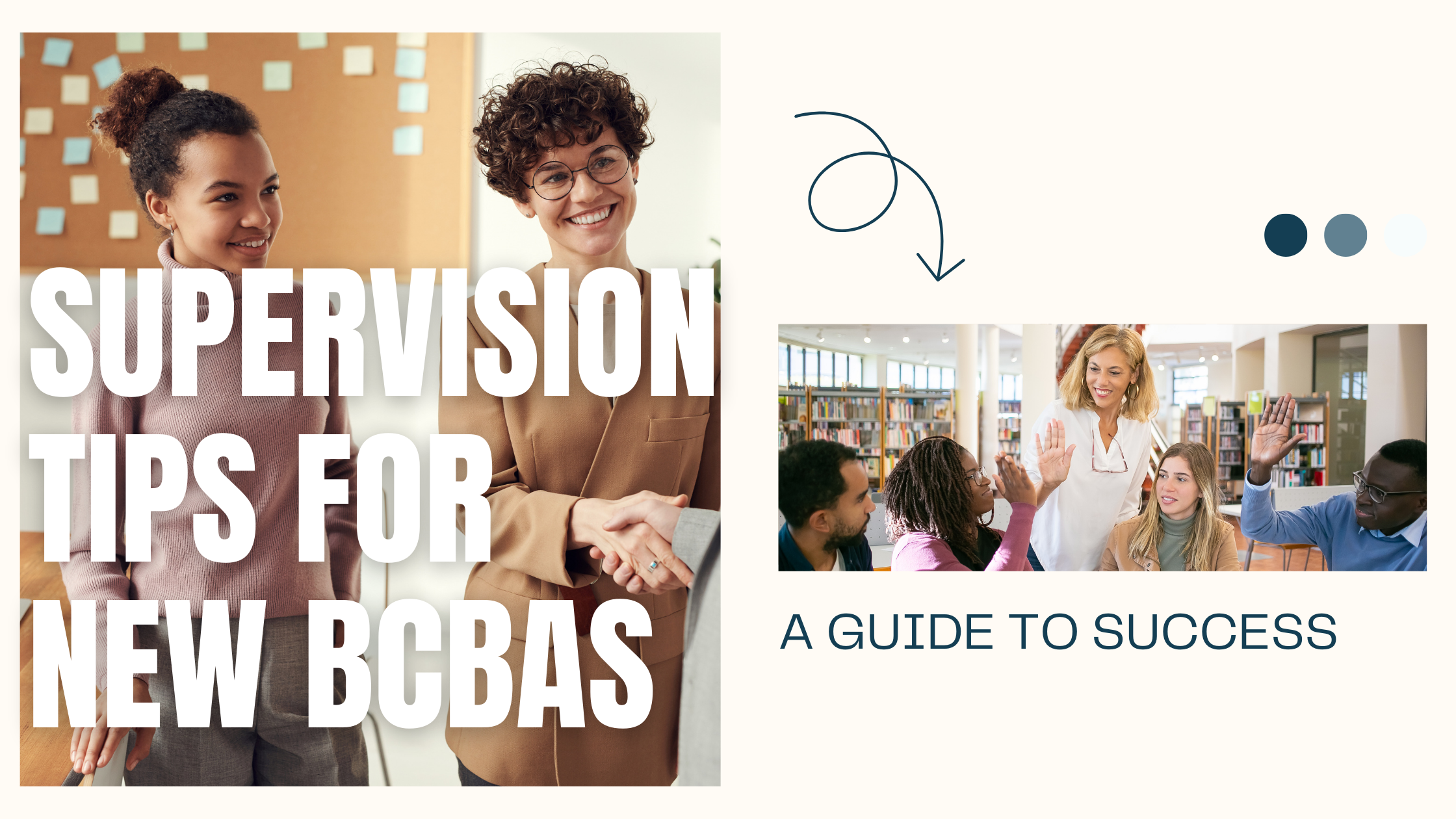Supervision Tips for New BCBAs: A Guide to Success
February 14, 2025

Are you a BCBA supervising RBTs? Congratulations! You’re basically the Yoda of ABA, minus the green skin and swamp living (unless that’s your thing—no judgment). Providing effective supervision is key to shaping competent, confident professionals in the field of Applied Behavior Analysis (ABA). Here are some practical tips—sprinkled with a little humor—to enhance your supervision practices, boost engagement, and foster professional growth.
The Importance of Effective Supervision
Supervision isn’t just about meeting BACB® requirements—it’s about shaping the next generation of behavior analysts. Think of it as planting seeds that will one day grow into mighty behavior trees. Effective supervision:
- Ensures ethical, evidence-based practices.
- Promotes critical thinking and problem-solving skills.
- Builds professional confidence and competence (and maybe even some legendary spreadsheet skills).
1. Set Clear Expectations
Start with a solid foundation:
- Define roles and responsibilities clearly, so no one’s left wondering if they’re supposed to be the Jedi or the Stormtrooper in this scenario.
- Outline supervision structure, frequency, and objectives—because nothing says “professional” like a well-organized calendar.
- Create a supervision contract to ensure mutual understanding (think of it like a prenup, but for professional growth).
2. Foster Open Communication
Effective supervision thrives on transparency:
- Schedule regular check-ins (bonus points if coffee is involved).
- Encourage feedback from both parties—yes, even if it stings a little.
- Create a safe space for discussing challenges and successes. Think “therapy session,” but with more data sheets.
3. Model Ethical and Professional Behavior
Lead by example:
- Demonstrate ethical decision-making aligned with the BACB®’s Professional and Ethical Compliance Code (a.k.a. the behavior analyst’s rulebook).
- Showcase professionalism in interactions with clients, families, and colleagues—because “Do as I say, not as I do” never worked for anyone.
4. Use Real-World Examples
Bridge theory and practice:
- Incorporate case studies and real-life scenarios. Bonus points for using stories that start with “You won’t believe what happened during this session…”
- Discuss diverse client situations to build problem-solving skills (because life rarely sticks to the script).
5. Engage in Active Learning
Move beyond passive observation:
- Role-play different situations. Yes, it might feel awkward, but so did your first day as a BCBA, and look at you now!
- Assign hands-on tasks that encourage independent problem-solving. Think of it as the “choose your own adventure” of supervision.
6. Provide Constructive Feedback
Feedback is essential for growth:
- Balance positive reinforcement with areas for improvement (think “compliment sandwich”).
- Be specific, objective, and timely—because “Do better” is not exactly helpful.
- Use data to support feedback whenever possible. Numbers don’t lie, but they do love a good graph.
7. Encourage Reflective Practice
Self-reflection fosters continuous learning:
- Ask supervisees to reflect on their experiences and identify growth areas. Bonus if they don’t just say, “I need to be less awkward in meetings.”
- Discuss how their actions impact client outcomes—because behavior change isn’t just for clients.
8. Promote Professional Development
Support ongoing learning:
- Recommend relevant books, articles, webinars, and conferences. (Or just casually leave them on their desk with a sticky note: “Read this. It’s life-changing.”)
- Encourage participation in professional groups or mentorship programs. It’s like networking, but without the awkward small talk.
9. Track Progress Effectively
Stay organized:
- Use supervision logs to document activities and competencies. Think of it as the “receipt” for all the awesome work you’re doing.
- Regularly review goals and adjust plans as needed. Because life happens, and flexibility is key (also, coffee helps).
10. Celebrate Achievements
Acknowledge growth and milestones:
- Recognize improvements and accomplishments. Bonus points for confetti (real or metaphorical).
- Celebrate successful case studies, certifications, or skill mastery. Maybe even throw in a “World’s Best Supervisee” mug—because who doesn’t love a good mug?
Final Thoughts
Effective supervision not only prepares candidates for certification but also helps maintain high standards within the ABA field. It builds confident, ethical, and skilled professionals ready to make a positive impact.
By fostering open communication, promoting professional growth, and modeling ethical practices (with a sprinkle of humor), BCBAs can create a supportive learning environment that benefits both supervisors and supervisees.
💡 Share this guide to inspire best practices in BCBA supervision and strengthen the future of ABA therapy—because we’re all in this together (cue the inspirational music)!
